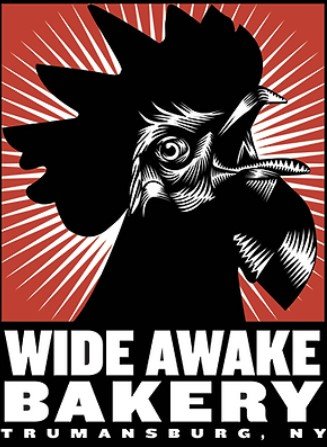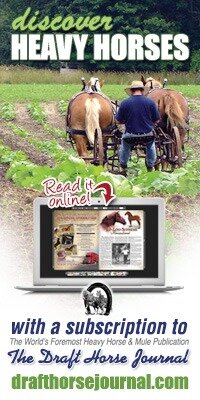Frank and Sparrow’s Excellent Adventure
We left Vermont on April 2nd. There was still snow on the ground and the sap hadn’t even really started to run yet. And now, only a few weeks later, it was the dead of winter, but all the snow was fake. Not only that, it was the 1850s. We were really in New Mexico, but the film set portrayed Fort Bridger in Wyoming. My oxen and I had been hired to portray draft cattle and teamster in a period miniseries.
**
I was standing next to my team hooked to our wagon loaded with dead animals in front of the tanner’s shop. There were two cavalry men next to me whose horses wished they were not required to wait next to my giant horned cattle and an older man with a horse and buggy in front of me. A dozen folks in costume waited all around us, still and quiet, ready to spring to life on command.
“SOUND!” someone shouted.
I made eye-contact with the man across the street driving a team of horses and a wagon, making sure he was ready to head across the intersection first. He nodded at me – good to go. Then I looked over at Frank and Sparrow, my oxen from 21st century Vermont. Their eyes were half closed and they were chewing their cud like they escorted piles of fake dead horses to the knackers in 1850’s Wyoming all the time (except for their being incredibly well fed and also for the RFID ear tags, which had been painted brownish red by the makeup department to blend in with their ears). I took my acetate cat's eye glasses off and put them in the pocket of my prairie dress and pulled my bonnet down to cover my face.
“BACKGROUND!” someone shouted.
That’s our cue. I lifted my goad a little bit and said “step up” softly as I started down the street. Frank and Sparrow dutifully came along as the rest of “Fort Bridger” sprung into action. We went down the road, started to turn the corner, but had to adjust our route as one of the soldiers’ horses made the executive decision that it should be the one directing where they went. This adjustment caused me to have to turn a bit sharper than I had planned.
I glanced back over my shoulder. As we turned, the front wheel of the wagon lifted up the wagon deck a little bit, and then a little bit more. The “sheep” and “horses” were “tied down” to the wagon but I wasn’t sure if they were tied down for show or for real. How much could I tip the wagon deck before they moved?
I had learned so many things in my month working on a film set. One of them is that wagon decks were not traditionally attached firmly to the running gear to allow for the front wheels to turn without having the center of gravity be too high. Another thing I learned is that real living horses hate fake dead horses and if these ones slid off the wagon onto the ground, well, there would be some interesting footage for the assistant directors to review.
We tried to ease around the corner as naturally as we could. My cargo shifted but it didn’t really move, and then we were able to straighten the wheels out again. A line of costume crew, makeup artists, production assistants, sound techs, and waiting actors were lined up, just out of the shot, watching my predicament. They understood what could have happened, and silently clapped and gave me the thumbs up. I gave them a tiny nod and walked my oxen through the huge wooden gate into the “army camp.”
**
As someone with a self professed interest in experiencing all the things one can do with draft animals from obstacle courses at the fair to mowing hay to lifting the header for the barn into place, show business hadn’t really crossed my mind until I got an email from one of the draft animal clubs I belong to. Another club member, who was a professional wrangler (this is the industry name for someone who works animals on a film set), had a job that needed 3 teams of oxen and he only had 2. So, he wanted to know, was there anyone out there up for an adventure? (The title of this story really is “why you should always read the club news-letter.”)
Evidently, a film production can rent 2 dozen horses for a shoot any day of the week. Even farm animals like sheep and pigs are readily available. But oxen are a bit more of a niche commodity. By the law of supply and demand, there just weren’t that many show business oxen out there. We weren’t show business oxen, but we all had a willingness to learn new things. So, how could I say no?
***
“What else have you been in?” one of the other wranglers asked me as he helped us hook up to our wagon.
“The woods.” I stammered. “Mostly we’ve been in the woods. And we pulled a corn planter at Horse Progress Days one year. It’s our first time on a job like this. “
No one treated us differently because we were greenhorns who rolled onto their job like the Clampetts came to Beverly Hills with our 1993 cattle trailer and truck that only got too warm once going up the giant interstate onramp that I swear was at a 45 degree angle. All of the wranglers I worked with were so kind and friendly and helpful. It truly felt like a team effort.
The wardrobe person I worked with regularly told me he had spent time in Essex, New York, but he did find Vermont maple syrup to be superior. The next day I brought him one of the pint bottles I’d packed to give to people along the way.
***
One of my favorite pieces of draft animal movie magic that I saw on set was a team of horses pulling a wagon with a “blind” driver. This setup is used when the actor needs to look like they are driving the wagon but the situation really needs an experienced driver. The actor sits in the driver’s seat and holds lines. But these lines are just hooked to some part of the harness. The real lines are very thin and go from the horses’ bits to a hole the size of a mail slot below the wagon seat where the actual teamster is hidden. The teamster can see a little bit but they also have a radio earpiece to get directions from a spotter.
When it was time for one of the main characters to arrive at the fort and drive her wagon through a large group of children or when we were all in a wagon train coming into “camp” to “circle the wagons” it looks just like she is driving the horses, but really there is someone hiding in the wagon doing the driving. I feel like it must take a very experienced team of horses, an experienced teamster, and quite a lot of trust between everyone involved. I’m not sure what the protocol is if an ox drawn wagon needs a blind driver. Maybe an earpiece for the oxen.
**
I love my oxen and I always felt like we have a good relationship and understand each other. But when we were working on this project, it was our job to be together for more hours every day than we’d ever been together before. Our days would sometimes begin at 3 or 4 am when I would get to the stable to feed them breakfast before we drove 30 miles to the set and then consist of 8-10 hours of working and several hours of hanging out resting at the trailer in between scenes, and then night time chores back at the stable. There was one 7 day period when we spent at least 15 hours a day together.
We had many days off, also. Far from home, I had nothing better to do than groom them, yoke them, and then go for a ride in the lovely BLM land next to the stables where they stayed, then walk them over to a patch of weeds outside the fence and let them graze there while I sat and ate the lunch I had brought with me.
It was an amazing experience that I describe as an “ox-human mind meld.” I felt like I knew what they were thinking and that they knew what I was thinking. I believe I developed a much better appreciation for the relationship that the folks who really walked West with their oxen might have had with them. Teamster and animal were so dependent on each other on their huge undertaking. I was humbled by the level of trust my animals put in me in this new place where the food, the environment, and the weather were so different from what we were used to East of the Mississippi. This went double on the set where there were hundreds of other people and animals and where sometimes things were on fire or where there were real explosions and fake wrecks. It was the team building exercise to rule them all.
***
We spent 3 fabulous months in Santa Fe but eventually it was time to come home. We arrived back in Walden, Vermont at 3:30 am on the Summer Solstice after an endless 18 hour final push. It was just beginning to get light in the East when I opened the trailer door. Sparrow staggered out and over to the paddock my housemates had prepared for us and started eating grass. I untied Frank, who shimmied out of the trailer and then trotted 2 laps around the 10 acre hay field before coming back and standing next to me.
East or West home is best.
**
My boys and I had an amazing time on our big adventure. The name of the miniseries is American Primeval and it premieres January 9th on Netflix. I cannot vouch for the historic accuracy, cultural sensitivity, or family friendliness of this production. But it does have oxen, so there’s that!
A picture of all the ox teams together next to the Rio Grande. Photo courtesy of Hickory Bow Oxen.































